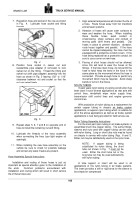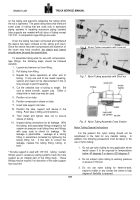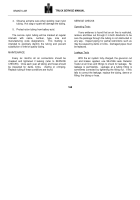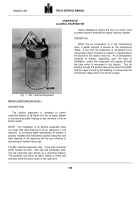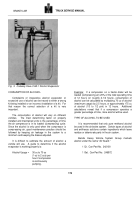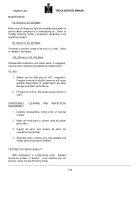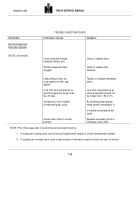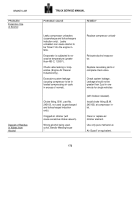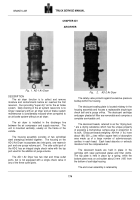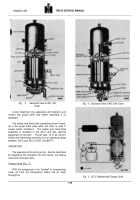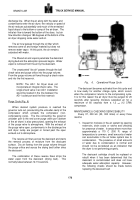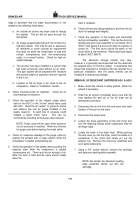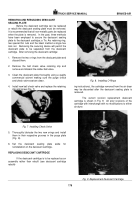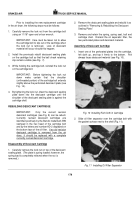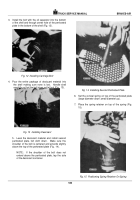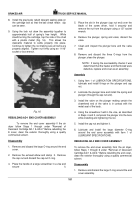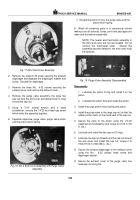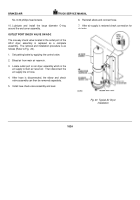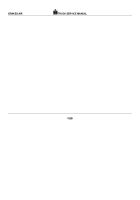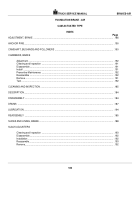TM-5-3805-254-14-P-2 - Page 178 of 894
TRUCK SERVICE MANUAL
discharge line.
When the air along with the water and
contaminants enter the air dryer, the velocity or speed of
the air reduces substantially and much of the entrained
liquid drops to the bottom or sump of the air dryer.
The
initial air flow is toward the bottom of the dryer,
but air
flow direction changes 180 degrees at the bottom of the
air dryer dropping some water and oil.
The air now passes through the oil filter which
removes some oil and foreign material but does not
remove water vapor.
At this point, the air remains
saturated with water.
The filtered air and vapors penetrate the desiccant
drying bed and the adsorption process begins.
Water
vapor is removed from the air by the desiccant.
The unsaturated "dry air" passes through the ball
check valve and purge orifice into the purge volume.
From the purge volume air flows through a check valve
and into the first reservoir.
NOTE: The AD-1 Air Dryer does not
incorporate an integral check valve.
The
single check valve in an AD-1 installation
would be located in the line between the
AD-1 outlet port and the first reservoir.
Purge Cycle (Fig.
6)
When desired system pressure is reached the
governor cuts out, pressurizing the unloader cavity of the
compressor which unloads the compressor (non-
compressing cycle).
The line connecting the governor
unloader port to the end cover purge valve port (bottom
of the air dryer) is also pressurized, opening the exhaust
of the purge valve to atmosphere.
With the exhaust of
the purge valve open, contaminants in the discharge line
and dryer sump are purged or forced past the open
exhaust out to atmosphere.
The reverse air flows across the desiccant and starts
the removal process of moisture from the desiccant
surface.
Dry air flowing from the purge volume through
the purge orifice and across the drying bed further dries
the desiccant.
The combination of these reverse flows strips the
water vapor from the desiccant (drying bed).
This
normally takes between 12-15 seconds.
Fig .
6 .
Operational Purge Cycle
The desiccant becomes activated from this cycle and
is now ready for another charge cycle, which occurs
when the compressor returns to the compressing cycle.
It is for this reason the air dryer must be purged for 20
seconds after receiving moisture saturated air for a
maximum of 60 seconds from a 1.2
m2
(12 CFM)
compressor.
MAINTENANCE & CHECKING SERVICEABILITY
Every 37, 000 km (23, 000 miles) or every three
months:
1. Inspect for moisture in the air system by opening
reservoirs, drain cocks or valves and checking
for presence of water.
In areas where more than
approximately a 170 C (300 F) range of
temperature is common, small amounts of water
can accumulate in the air brake system due to
condensation.
The presence of small amounts
of water due to condensation is normal and
should not be considered as an indication that
the dryer is not performing properly.
The desiccant cartridge should be replaced or
rebuilt when it has been determined that the
desiccant is contaminated and does not have
adequate water adsorption capacity.
However,
the following checks should be made before
replacing the desiccant cart
176
BRAKES-AIR
Back to Top

